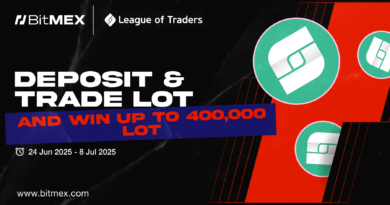What Is Circulating Supply in Cryptocurrency?
Most people check a coin’s price to see how it’s doing. But that number doesn’t mean much on its own. What really matters is how many coins are actually out there and in use. That’s what circulating supply tells you. It helps you spot overpriced tokens, understand market cap, and make smarter investment choices.
Let’s break down why this metric matters—and how to use it.
What Is Circulating Supply in Crypto?
Circulating supply is the number of coins or tokens currently available to the public. These coins can be traded, spent, or held in wallets. It doesn’t include locked tokens, burned coins, or anything reserved by the project.
You can think of it like the money supply in an economy. Just because a government prints a bunch of cash doesn’t mean it’s all in circulation. The same idea applies to crypto. A project might have a huge total supply, but only a small part is live on the market.
For example, Bitcoin has a fixed maximum supply of 21 million. But as of May 2025, about 19.7 million BTC are in circulation. The rest are either yet to be mined—or lost forever in forgotten wallets.

How It’s Calculated
Circulating supply isn’t just a guess—it’s based on real numbers. But the exact method can vary depending on the project.
The basic formula looks like this:
Total Supply − Locked Tokens − Burned Tokens = Circulating Supply
That means you remove any tokens that are:
- Locked in team wallets (like those under vesting schedules)
- Set aside for staking rewards or future development
- Burned (sent to an address that no one can access)
Let’s say a token project has:
- 1 billion total tokens
- 200 million locked for the team
- 100 million already burned
In that case, the circulating supply is 700 million.
Some tokens, like Ethereum, have changing supply levels. ETH uses a burn mechanism (EIP-1559) to destroy some tokens every time a transaction happens. So, the circulating supply goes up and down over time.
You can track this info through:
- Official tokenomics documents
- Blockchain explorers (like Etherscan for Ethereum-based tokens)
- Trusted data aggregators (like CoinGecko and CoinMarketCap)
But be careful—data can sometimes be outdated or inaccurate, especially if a project hides its unlock schedules or burns. Always double-check across multiple sources.
Circulating Supply in Centralized vs Decentralized Projects
Circulating supply works differently depending on how a project is run.
In centralized projects, a small group controls the token distribution. Large portions of the supply are often locked or held by the team. That means they can choose when to release tokens, which can affect price and supply suddenly. For example, XRP, where Ripple Labs holds a big share and releases it gradually.
In decentralized projects, supply changes follow rules built into the code. No single party controls token release. Bitcoin is a good example—new coins are released through mining at a fixed rate, and no one can speed it up.
Bottom line: centralized projects may show lower circulating supply than what’s available behind the scenes. That adds risk. Always check how supply is managed.
How Circulating Supply Is Tracked
Circulating supply is tracked using public data from the blockchain, project disclosures, and analytics platforms. The goal is to figure out the number of tokens that are actually in the hands of users—not locked in reserve or burned.
Sites like CoinGecko and CoinMarketCap scan wallet addresses and read token contracts. They estimate supply by subtracting team holdings, unclaimed rewards, and burned coins from the total.

Some blockchains make this easy. Others, especially newer or private ones, are harder to track. When project teams don’t share all the data, it’s tough to account for remaining tokens or future unlocks.
Still, circulating supply remains a key metric across the cryptocurrency market. It helps you see how much of a coin is truly active—and how much is still waiting on the sidelines.
Circulating Supply vs Total Supply vs Maximum Supply

It’s easy to mix them up, but each supply metric tells you something different about a coin’s economy.
Circulating supply refers to the coins already available on the market. These tokens can be bought, sold, or traded right now. It shows what’s liquid and actively used.
Total supply represents all coins that currently exist, including those that are locked, reserved, or staked. It excludes any coins that have been permanently burned.
Max supply is the hard cap—the most coins that will ever exist. Some projects don’t set one, like Ethereum. Others, like Bitcoin, cap it at 21 million.
Put simply:
- Circulating supply represents what’s in play today
- Total supply shows everything that’s been created
- Max supply sets the ceiling for the supply of a cryptocurrency
Why Circulating Supply Matters
Understanding circulating supply helps you make sense of a coin’s price. A token might seem cheap, but if it has a high circulating supply, its market cap could already be huge—leaving little room for growth.
On the other hand, a low circulating supply can push prices up fast when demand rises. But it also means price swings can be more extreme, especially with low liquidity.
Ignoring supply metrics can lead to surprises—like sudden price drops after a large token unlock. Just look at what happened with Aptos in October 2024. After a large batch of tokens unlocked, APT dropped over 12% in a single day. The market simply couldn’t handle the sudden bump in supply.
Same story with the Trump meme coin in April 2025. About 40 million tokens—worth $300 million—hit the market. The price dipped, adding to a brutal 90% fall from its all-time high.
These aren’t rare cases. They’re reminders that circulating supply isn’t just a technical detail—it’s a core part of how crypto markets move.
If you want to avoid hype traps, making informed investment decisions starts with knowing how much of a token is actually on the market.
Factors That Affect Circulating Supply
Multiple things can change how many cryptocurrency coins are circulating in the market. Some happen by design, others due to project decisions.
Mining rewards and new coins increase supply gradually. This is how Bitcoin’s circulating supply has grown over time—new BTC enters the blockchain network through mining, until it hits its maximum number of 21 million.
Token unlocks, like vesting schedules or developer incentives, can add more tokens to the public pool. These are tokens that are publicly released over time.
Some networks burn tokens to reduce the total number of coins. Others collect transaction fees and burn part of them—like Ethereum.
Together, these factors impact both total and circulating supply, and by extension, the coin’s market capitalization and current price.
Circulating Supply and Market Capitalization
Market capitalization is a quick way to measure the size of a cryptocurrency. It tells you how much value the market assigns to a project at a given moment.
To calculate it, multiply a coin’s price by its circulating supply. This gives you the market cap—what the entire circulating amount is worth at current prices.
But the market cap only reflects tokens that are actively in circulation. It doesn’t account for tokens still locked, burned, or reserved. That’s where things can get misleading.
A coin might have a small circulating supply and a high price, which makes its market cap look modest. But if a large number of tokens are scheduled to unlock later, the real valuation could balloon—or the price could drop to absorb the supply.
That’s why it’s important to check both market cap and the full token supply breakdown. Use circulating supply to judge the coin’s value now, and use total or max supply to estimate long-term risk.
How to Use Supply Metrics in Your Investment Strategy
Supply metrics help you avoid buying into hype. Always check how much of a token is in circulation and how much is still locked.
A small circulating supply might mean prices can rise quickly—but also that future unlocks could dilute value. Check release schedules to avoid any surprises.
Projects with a limited supply, like Bitcoin, are often seen as digital gold. The idea is simple: the scarcer the asset, the more value it can gain if demand rises.
Use tools like CoinGecko or TokenUnlocks to compare current supply, max supply, and release timelines. It’s a quick way to spot risks—and opportunities.
Final Words
Circulating supply isn’t just a background number—it shapes price, market cap, and long-term value. Before you invest, take a minute to check how much of the token is actually out there.
A little supply research goes a long way. It can help you spot stronger projects, avoid hidden risks, and invest with more confidence.
FAQ
How do I check the circulating supply of a coin?
You can check it on platforms like CoinGecko or CoinMarketCap. These sites pull data from blockchains and project teams to show how many tokens are currently in circulation. For even more detail, blockchain explorers like Etherscan can help you verify wallet balances and locked tokens.
What happens when a token reaches max supply?
Once the maximum number of tokens has been issued, no new tokens can be created. This can increase scarcity over time. If demand holds or grows, prices may go up simply because there’s no way to increase the supply.
Can circulating supply decrease over time?
Yes, in a few cases. Some projects burn tokens to reduce supply, which can make the remaining tokens more valuable. Also, tokens lost in unrecoverable wallets effectively reduce the number of coins available in the market.
Why does total supply sometimes exceed circulating supply?
Because not all tokens are released at once. Some are locked for the team, reserved for future development, or tied up in staking. Total supply includes all tokens that exist—circulating supply only counts those that are active and tradable.
Is high supply always a bad thing?
Not at all. Some projects are designed with large supplies to support microtransactions or broad distribution. What matters is how that supply is used, how fast it grows, and whether demand keeps up.
What is a token burn, and how does it work?
Token burning means permanently removing coins from circulation. This is usually done by sending them to a “burn address” with no private key. It reduces total supply and can support long-term price stability—if demand is steady or rising.
Disclaimer: Please note that the contents of this article are not financial or investing advice. The information provided in this article is the author’s opinion only and should not be considered as offering trading or investing recommendations. We do not make any warranties about the completeness, reliability and accuracy of this information. The cryptocurrency market suffers from high volatility and occasional arbitrary movements. Any investor, trader, or regular crypto users should research multiple viewpoints and be familiar with all local regulations before committing to an investment.
The post What Is Circulating Supply in Cryptocurrency? appeared first on Cryptocurrency News & Trading Tips – Crypto Blog by Changelly.
Cryptocurrency News & Trading Tips – Crypto Blog by Changelly


















